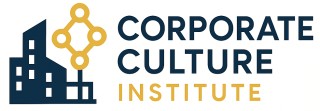
Understanding the Agile Mindset
Adopting an Agile Perspective
Transitioning to an agile mindset is a crucial element for any organization looking to stay competitive in today's fast-paced business world. At the core of agile is a philosophy that embraces change, encourages collaboration, and prioritizes delivering value to customers. Understanding this mindset is the first step towards effectively adopting agile practices.
Agile isn't just about processes and tools; it's a cultural shift in how teams and organizations approach challenges. It requires leaders and team members to embrace adaptability over rigid planning, fostering an environment where continuous learning and improvement are championed.
Incorporating agile into your professional life often begins with a robust goal-setting approach. This will give you a clearer understanding of agile principles, enabling you to lead effectively whether you're working on small-scale projects or managing a large-scale transformation.
For those seeking formal recognition of their agile expertise, pursuing a certification such as Scrum Master or Safe Agilist can be an excellent investment. These certifications demonstrate your commitment to mastering agile methodologies and preparing yourself for leadership roles in agile teams.
Whether through a leadership-oriented Leading Safe course or a more focused Scrum Master certification training, getting certified can enhance your understanding of agile frameworks. This knowledge can then be used to support your team's release planning, lean portfolio management, and even engagement at the release train level.
Developing an agile mindset is a continuous journey that will benefit from ongoing training and real-world experience. Ultimately, it’s about fostering a culture that values customer satisfaction, team collaboration, and constant improvement, allowing businesses and teams to thrive in a dynamic market landscape.
The Role of Corporate Culture in Agile Adoption
Corporate Culture's Influence on Embracing Agile
The adoption of agile methodologies within an organization significantly hinges on the corporate culture prevalent in that environment. Recognizing and adapting to the nuanced cultural elements can dramatically influence the success of agile practices. An organization's management style, communication flow, and the level of hierarchical flexibility play crucial roles in this transition.
Organizations that thrive in an agile setup generally display a lean-agile mindset, fostering open communication and encouraging knowledge-sharing among teams. They create a foundation where ideas can flow freely and team members feel empowered to contribute actively to the process. Management supports teams by investing in necessary training courses, like the SAFe scrum master or leadership in scaled agile practices, complementing the technical skillset needed for effective agile deployment.
A firm grasp of organizational context and values becomes critical when acquiring an agilist certification. Enterprises that lack alignment in these areas might face hurdles in their transformation journey. Certification training often highlights these cultural dynamics by exposing participants to real-life cases and applications.
Moving beyond standard practices, effective leaders foster environments that embrace change and continuous improvement. This includes encouraging ongoing professional development and streamlining management processes to support incremental releases and fast feedback loops, vital for agile release planning.
Additionally, addressing potential resistance to change requires engagement and alignment across different departments, further strengthening the agile framework. An emphasis on enhancing performance reviews with peer feedback serves to support this change by creating dialogues that highlight both organizational and individual growth.
Ultimately, a corporate culture that aligns well with agile principles not only eases the transition but also enhances agility at scale, supporting lean portfolio management and ensuring resilient product development cycles.
Skills and Competencies for Agilists
Essential Skills for Aspiring Agilists
In the journey to master the path of an agilist, developing a solid skillset is paramount. Aspiring agilists should focus on a range of competencies that enable them to effectively implement and lead agile transformations within their organizations. Here are some key areas to concentrate on:
- Agile and Lean Principles: Understanding the core concepts of agile and lean methodologies is crucial. This includes familiarizing oneself with various agile frameworks such as scrum, scaled agile, and the principles behind lean portfolio management.
- Safe and Scrum Master Certifications: Attaining certifications such as the Certified Safe, Safe Agilist, or Scrum Master can enhance credibility and demonstrate a commitment to the agile career path. Certification training includes in-depth courses and exams, helping individuals acquire necessary knowledge and skills.
- Communication and Collaboration: Agile relies heavily on effective communication and teamwork. Agilists need to facilitate communication flow between team members and stakeholders, ensuring that the agile release train moves smoothly.
- Business Acumen: A deep understanding of the business context is vital for devising strategies that align with organizational goals. This includes agile product management, aligning agile practices with business objectives, and managing agile portfolios.
- Change Management: Assisting organizations in overcoming resistance to change is another crucial competency. Agilists should be adept at driving change and instilling an agile mindset within their teams and organizations.
By equipping themselves with these skills, agilists can better lead turning theoretical knowledge into actionable practice. Such development not only aids in personal growth but also significantly impacts the corporate culture, facilitating a more seamless and effective agile transformation.
Building Agile Teams
Nurturing a Cohesive and Productive Agile Team
In the journey to becoming an effective agilist, fostering cohesive and productive teams is paramount. Agile teams are the backbone of agile organizations, and their success hinges on a blend of collaboration, trust, and clear communication. Here’s a closer look at what it takes to build and sustain these dynamic groups.- Scalability through Frameworks: Using frameworks like Scaled Agile Framework (SAFe) or Scrum can provide structure and consistency across various agile teams within an organization. These frameworks are instrumental in aligning teams under a unified approach, ensuring that initiatives like agile release trains work seamlessly.
- Tailored Agile Training Courses: To elevate the skills of your team, encouraging participation in specific training courses can be invaluable. Whether it's a course dedicated to safe agile practices or scrum master certification training, providing these opportunities ensures each team member is equipped with the essential knowledge to contribute effectively.
- Leading Agile Teams: A successful agile team leader embodies both management acumen and a deep understanding of agile principles. Being a certified SAFe agilist or a certified scrum master can provide the credentials necessary to guide teams confidently through the intricacies of agile project management.
- Fostering Lean and Agile Portfolio Management: Integration of lean portfolio management strategies helps streamline processes and prioritize initiatives that align with business goals. This approach not only optimizes productivity but also aligns the team’s efforts with larger organizational objectives.
- Continuous Learning and Adaptation: Agile contexts demand constant adaptation. Regular certification and re-certification, such as participating in a SAFe certification course, keep team members abreast of the latest methodologies, thereby maintaining their relevance and effectiveness in this fast-evolving domain.
- Open Communication Channels: Encouraging an open dialogue within the team fosters an environment where innovation thrives and challenges are viewed as opportunities for growth. Utilize agile frameworks to facilitate regular retrospectives, ensuring continuous improvement in processes and interpersonal dynamics.
Overcoming Resistance to Change
Addressing Challenges and Fostering Change
Navigating the complexity of organizational transformation remains a significant hurdle in adopting agile methodologies. Acknowledging and addressing resistance to change is pivotal for any organization aiming to become agile. This resistance often stems from a lack of understanding of the agile framework and its benefits, concerns about job security, and apprehension over role changes. To tackle these concerns, it's vital for companies to engage in comprehensive certification training programs. Offering courses like safe certification and leading safe can equip employees with the knowledge and confidence they need to embrace change. By pursuing an agilist certification or taking a safe agile training course, individuals can deepen their understanding of agile principles and potentially inspire others.- Communicate Clearly: Effective communication ensures everyone understands why the change is necessary, what benefits it will bring, and how it improves the business process. Transparency from management fosters trust, which can mitigate fears and promote acceptance.
- Provide Support: Facilitate access to resources such as lean agile and scrum master certification classes. Supporting team members in gaining these certifications can help them recognize the value of their roles within the agile framework.
- Incorporate Feedback: Engaging with team members to gather their insights and experiences with the agile release process can offer valuable perspectives. It cultivates a sense of ownership and can lead to innovative solutions that improve lean portfolio management.













